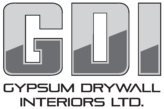August 25, 2017
The Pre Job Hazard Assessment
And it’s called PRE JOB for a reason!
Learning the habit of writing down a hazard can be a steep learning curve. What one person may not identify as a hazard will be an obvious nuclear melt down to others. This is simply due to being too familiar with an activity or process and not having been bit by it in the past, or also just assuming that this is the way it’s going to be.
All of the hazards (at least in construction) should start with some mention of MSI (muscle strain, back strain) due to the lifting requirements of workers. Sharp tools are always around as is working at heights. Late fall/early winter conditions week will be thick with slippery walking surfaces. So two things that should always be mentioned (because they will always be present), and their control of hazards, are:
heavy lift/ load – muscle strain, and
slippery walking surfaces.
Assign the hazard some kind of rating:
Hazard rating:
Extreme hazard, injury or death will be the result (anytime we work at heights)
Moderate risk (drywall dust, paint fumes, lifting materials, handling sharp tools, hand or power)
Low risk (rolling paint, marking layouts)
All is okay
NA
Identified hazard | Hazard rating | Controls | Control date |
At heights, fall from scaffold | A | Fall protection plan: guard rails, harness & lifeline | The day you are up there |
Moving drywall sheets-heavy load | B | Good lifting technique, Lighten the load , Get help in the lift | The day you are doing this move |
Drywall dust, silica | B | Respirator | The day you are sanding |
Stooping and kneeling while sanding low or doing layouts | B | Knee pads, Micro breaks to stand up and straighten back | The day of the work |
Slippery entry to house | B | Sand or salt on walkways, Traction cleats (i.e. Yaktrax) on boots, call Prime for sand/gravel
| The date of your slippery entry getting fixed. |
Lastly, share the hazard assessment with others. Let everybody know about the hole in the floor before they find out the hard way. And don’t forget to send it to your supervisor or safety manager: take a photo of it with your phone and email it off. That way we know that there is a record of it if someone asks.
Thanks,
Ihor
